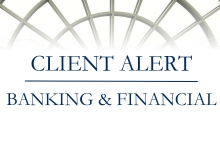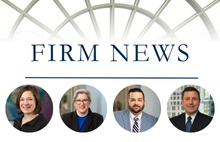Revised DOL Rule Means More Health Care Workers Are Eligible for Paid Coronavirus-Related Leave
September 15, 2020Passed in the chaotic early days of the pandemic, the Families First Coronavirus Response Act ("FFCRA") provides paid leave for millions of employees at small and medium-sized employers. The FFCRA allows for leave due to various coronavirus-related reasons, such as an employee's own illness or the need to care for a child whose school had been closed. Fearing that the health care industry would become inundated by caring for those sick with the virus, Congress allowed the Department of Labor ("DOL") to set out criteria to permit covered employers to exclude health care providers from the leave benefits under the FFCRA. On April 1, 2020, just weeks after the FFCRA became law, the DOL issued a Temporary Rule that did just that.
But in August, a federal judge struck down the Temporary Rule's expansive definition of "health care provider." In response and effective September 16, 2020, the DOL revised the Temporary Rule to make FFCRA leave now available to more employees working in the health care sector.
The Broad Health Care Provider Exclusion Under the April Temporary Rule
Structurally, the FFCRA is an amendment to the Family and Medical Leave Act of 1993 ("FMLA"), and it adopts the FMLA's longstanding definition of "health care provider". Generally speaking, this definition is limited to those from whom an employer might accept an FMLA medical certification, such as a medical doctor or a clinical psychologist. Reasoning that Congress used the phrase "health care provider" in two completely different contexts, however – one to refer to those who advise patients to self-quarantine, and another to define those who can be excluded from the FFCRA's leave benefits – the DOL initially created a separate definition for each context under the FFCRA.
With the intent to exclude workers from the leave benefits, the April Temporary Rule defined heath care provider as "anyone employed at" a medical facility, such as a doctor's office or a hospital. This broad definition permitted health care employers, if they chose, to exclude all of their workers from the paid leave benefits of the FFCRA, irrespective of those employees' patient-care responsibilities.
The DOL Narrows the April Temporary Rule After a Federal Court Invalidates the Health Care Provider Definition
In August, a federal judge struck down several provisions of the April Temporary Rule. The suit was brought by the State of New York, which argued that the challenged provisions improperly limited availability of leave under the FFCRA. In siding with the State, the court held that the health care provider definition was simply too broad and, in turn, enabled too many employees to be excluded from the FFCRA's paid leave benefits.
In particular, the court focused on the fact that the April Temporary Rule's definition hinged on the identity of the employer, not the job functions of the employee. The decision explained that, in order to adhere to the FFCRA's mandate, the definition must depend on the "skills, role, duties or capabilities" of the employee.
In response, the DOL revamped its definition. Under the updated Temporary Rule, "health care provider" will mean those falling within that definition under the FMLA, as well as:
Any other Employee who is capable of providing health care services, meaning he or she is employed to provide diagnostic services, preventive services, treatment services, or other services that are integrated with and necessary to the provision of patient care and, if not provided, would adversely impact patient care.
The revised Temporary Rule lists nurses, nurse assistants, and medical technicians as examples of employees covered by the new definition. The revised Temporary Rule suggests that IT professionals, maintenance staff, human resource personnel, food service workers, record managers, and billers would not fall within the new definition, even if their work could affect the provision of health care services.
Health Care Employers Must Quickly Adapt to the New Definition
The FFCRA covers most employers with fewer than 500 employees. Covered employers in the health care sector who have been routinely excluding all employees from paid leave will need to promptly revisit their decisions in light of the revised Temporary Rule. The new definition – and, in turn, the leave benefits – will become effective on September 16, 2020. This means that many non-clinical personnel will immediately be entitled to leave for qualifying coronavirus-related reasons.
The timing of this rule change is significant, as the FFCRA provides up to 2 weeks of sick leave or up to 12 weeks of paid leave for childcare purposes – but expires completely on December 31, 2020. Because many now-eligible workers were previously ineligible, it is possible that their entire leave allotment will be available to them.
For additional information on the benefits provided by the FFCRA and for suggestions on how to comply with the obligations they impose on covered employers, please see our previous alerts, which are collected on our Coronavirus Employer Resources page.








